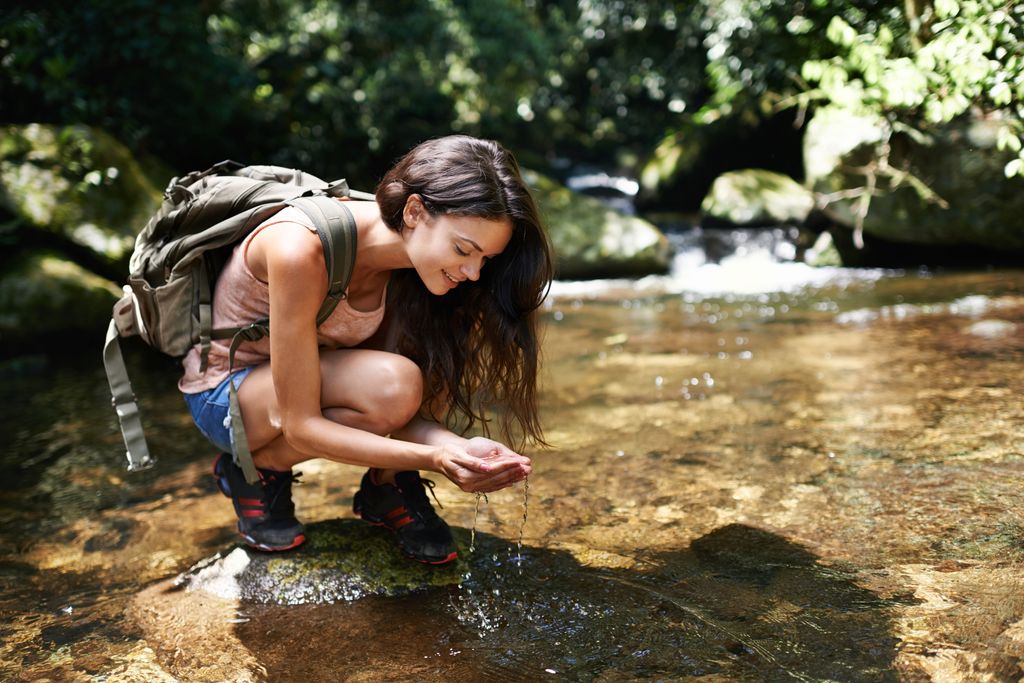The amoeba Naegleria fowlericommonly known as the “brain-eating amoeba“, is a microscopic organism that can cause a fatal infection in the human brain. Although its name sounds scary, it is important to remember that this infection is extremely rare. However, when it occurs, most cases are fatal. To better understand this dangerous infection, we turn to Dr. John Fredy Rojas LievanoInfectious Diseases physician at the Sanitas CIMA Hospital, who provides us with a detailed explanation of how this amoeba operates and what we can do to protect ourselves.
– Read: Meningitis: symptoms and treatment in adults
What is ‘Naegleria fowleri’?
The Naegleria fowleri It is a free-living amoeba, meaning it does not need a host to survive. It lives in freshwater bodies, such as lakes and rivers, and thrives in warm waters.specifically in temperatures above 30 degrees Celsius. According to Dr. Rojas, this amoeba “tolerates up to temperatures of 45 degrees,” which explains why it is most frequently found in warm climates and during the summer months.
Dr. Rojas explains that this organism is dangerous because it can cause a rare but deadly brain infection called primary amoebic meningoencephalitis (PAM).
Infection occurs when the amoeba enters the body through the nose and travels to the brain, where it destroys brain tissue. This process is what has led to it being nicknamed “brain-eating amoeba.”
Where is this amoeba found?
The Naegleria fowleri It is mainly found in bodies of warm or temperate fresh water. This includes lakes, rivers and hot springs, as well as swimming pools that have not been properly treated with chlorine. “It does not survive in salt water,” clarifies Dr. Rojas, so it is not a risk in the oceans.
An important aspect is that the amoeba Thrives in stagnant water or water with little currentwhich makes it more dangerous in places where water circulation is limited. This explains why recreational activities in lakes and rivers during the summer months are the main risk situations.
How does infection occur?
For a person to become infected with Naegleria fowlerihe contaminated water should come into contact with the nose. “People become infected by swimming or submerging in bodies of warm fresh water, since the amoeba enters the body through the nasal cavity,” says Dr. Rojas. Once inside the body, the amoeba travels along the olfactory nerves to the brain, where it begins to destroy brain tissue.
It is important to mention that infection does not occur from drinking contaminated water. Dr. Rojas clarifies that the nasal route is the only form of contagion, which means that activities such as swimming, diving, or submerging in contaminated water They are the main forms of exposure.
Symptoms of infection
The first symptoms of infection usually appear between 1 and 12 days after contact with the amoeba, although the average is 5 days. “Initial symptoms include severe headaches, fever, nausea and vomiting“explains Dr. Rojas. As the disease progresses, the symptoms become more severe and include stiff neck, confusion, loss of balance, seizures, and even hallucinations.
The most alarming thing is how quickly the infection progresses. “Without immediate treatment, the infection generally proves fatal within a few days,” warns Dr. Rojas.
The disease progresses so rapidly that most patients die between 3 and 7 days after symptoms begin.
One of the reasons why Naegleria fowleri is so deadly is because Initial symptoms are similar to other conditions, such as bacterial meningitis. This can delay diagnosis, further reducing the chances of survival. “It is essential to go to the emergency room as soon as possible if these symptoms occur after being in contact with warm fresh water,” recommends Dr. Rojas.
– Read: When should you go to the emergency room for a headache?
Who is most at risk?
The people most likely to contract this infection are those who participate in recreational activities in freshwater areas during the summer months. This includes children and young peoplewho tend to be more active in these environments. “Children and young people are more exposed due to their frequent participation in aquatic activities,” explains Dr. Rojas.
Additionally, people who immerse themselves in poorly treated water, such as swimming pools without adequate chlorination or hot springsare also at greater risk. In these cases, the risk is due to the proliferation of the amoeba in conditions of warm and poorly maintained water.
Is infection common?
Despite its lethality, the infection Naegleria fowleri It is extremely rare. According to Dr. Rojas, “reported cases of infection are very few compared to the number of people who come into contact with fresh, warm water.” In fact, most people who are exposed to this amoeba do not become infected.
It is important to note that infection is rare. However, caution is necessary in high-risk areas, especially during the summer months.
Is there a treatment?
Dr. Rojas confirms that There is a treatment for infection Naegleria fowleribut its effectiveness is limited due to the rapid progression of the disease. “Treatment includes medications such as amphotericin B, azoles, azithromycin, and rifampicin“comments Dr. Rojas. These medications have shown some positive results, but only when administered in the early stages of infection.
In addition to medications, intensive supportive measures are used, such as control of intracranial pressureto treat the effects of the infection on the brain. However, despite these efforts, most cases are fatal even with treatment.
– Read: 4 serious diseases that can cause headaches
How to prevent it?
Since infection is almost always fatal, prevention is the best strategy. “It is important prevent contaminated water from entering the nose when swimming or perform aquatic activities in lakes, rivers or poorly maintained pools,” advises Dr. Rojas. Using nose plugs or avoiding immersion in these waters can reduce the risk of exposure.
Additionally, it is essential to ensure that pools are adequately chlorinated and avoid using poorly treated hot springs or pools. These simple measures are essential in preventing this deadly infection.



